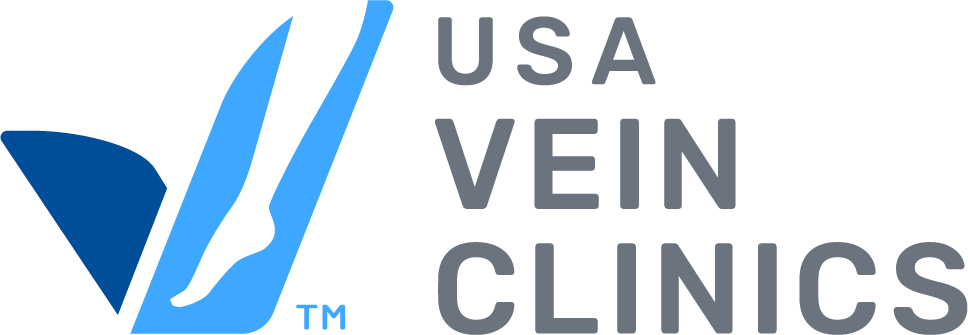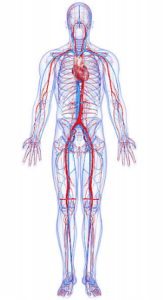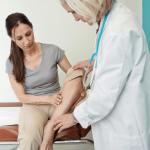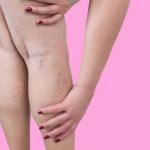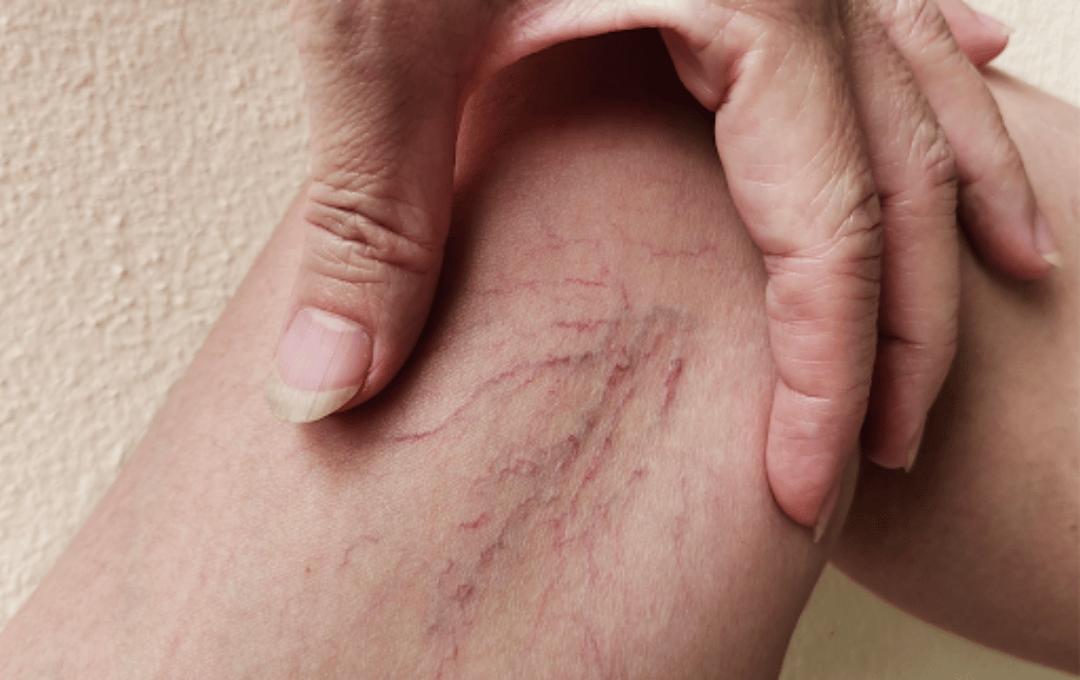
Blood vessels play a key role in the body. They carry blood throughout the body. There are three major types of blood vessels: arteries, capillaries, and veins. There are at least 34 main veins in the human body, but an exact number cannot be determined due to the large amount of capillaries and smaller veins.
Veins can develop issues over time, such as vein disease. Vein disease is the root cause of varicose veins and spider veins. It can also increase the risk of many other health conditions. Experienced vein specialists at USA Vein Clinics can diagnose, evaluate, and treat vein disease. We offer minimally invasive treatments and accept most insurance plans. If you are unsure your insurance will cover your vein treatment, you can verify your insurance using our online scheduling tool.
Overview of Blood Vessels in the Human Body
Your blood vessels are part of your body’s circulatory system. The heart is the center of the circulatory system, while vessels transport blood throughout the body. The total number of blood vessels in the human body cannot be counted. However, if all the blood vessels were removed from an adult’s body and laid straight, they would stretch almost 60,000 miles.
There are three types of blood vessels:
- Veins: Veins transport deoxygenated blood back to your heart. Valves in your vein ensure that blood only travels in one direction.
- Arteries: Arteries carry oxygen-rich blood from your heart to your organs and tissues.
- Capillaries: Capillaries are tiny vessels that connect arteries to veins and exchange nutrients, oxygen, and waste between the blood and body tissues.
The Role of Blood Vessels in Circulatory Health
The circulatory system fuels the body. To understand the role of the circulatory system, it can be helpful to think of the body as the car. The heart is the engine; the blood is the oil, and your vessels are the pipes, hoses, tubes, and wires. Similar to how a car should be maintained to run efficiently, it’s important to maintain healthy veins. The circulatory system delivers the essential nutrients and oxygen that keep organs functional. Conditions that affect it can be dangerous.
Vein disease is a condition of the circulatory system that is the underlying cause of varicose and spider veins. This common health condition can lead to a range of painful and uncomfortable symptoms. It can also place you at increased risk for serious health conditions such as blood clots and venous ulcers.
If you experience symptoms like swelling, cramping, itching, or fatigue in your legs, we recommend consulting a vein specialist as soon as possible.
Understanding the Types of Blood Vessels and What They Do
Each type of blood vessel has a different structure, which helps the vessels play a vital role in the circulatory system. When these vessels experience damage or dysfunction, it can lead to conditions such as vein disease.
Arteries
Arteries are blood vessels that carry oxygen-rich blood away from the heart to the body’s cells and tissues, delivering nutrients and hormones. Unlike veins, they don’t rely on valves to maintain blood flow since they operate under higher pressure.
Capillaries
Capillaries are delicate and small blood vessels (tubes that hold blood) throughout your body. They bring nutrients and oxygen to cells in your organs and body systems. In exchange, they also carry away tissue waste like carbon dioxide. Healthy capillaries support overall circulation and help prevent complications related to poor vein function.
Veins
Veins have intima, media, and adventitia layers. When someone develops vein disease, the valves in the intima become weakened or damaged. When the valves become damaged, the veins can’t fight against gravity to push blood back to the heart. This causes blood to pool and the veins to dilate, resulting in the appearance of varicose veins. Vein disease typically starts in the intima, the innermost layer, where the valves are located and can develop into more severe cases if left untreated.
5 Questions to Evaluate Your Vein Health
Why Blood Vessel Health Matters
When blood vessel health is affected, the body is affected. Conditions such as vein disease impact circulation, which can cause painful symptoms such as:
When these conditions are untreated, they can lead to complications including:
- Venous Ulcers: These wounds take longer than a few months to heal or don’t heal at all. If the wound isn’t kept clean, it can become an infection.
- Deep vein thrombosis (DVT): DVT is a condition that occurs when a blood clot forms in a vein and blocks blood flow. These clots can travel to the lungs. DVT is potentially life-threatening.
- Superficial thrombophlebitis: Superficial thrombophlebitis is a blood clot that develops in a vein just under the skin. It can lead to pain and inflammation.
The only way to avoid these complications is to receive a diagnosis and treatment for vein disease. All treatments at USA Vein Clinics are FDA-approved and effective in reducing vein disease symptoms.
Stay on Top of Your Vein Health
Getting screened for vein disease is important if you are experiencing symptoms. Vein specialists at USA Vein Clinics offer comprehensive evaluations and personalized treatment plans so you can focus on the care you need. Treating issues early can help reduce the risk of complications. With over 168 locations nationwide, you can find symptom relief when you call to schedule your appointment at a USA Vein Clinic near you.
*Last Reviewed 12/12/2024
